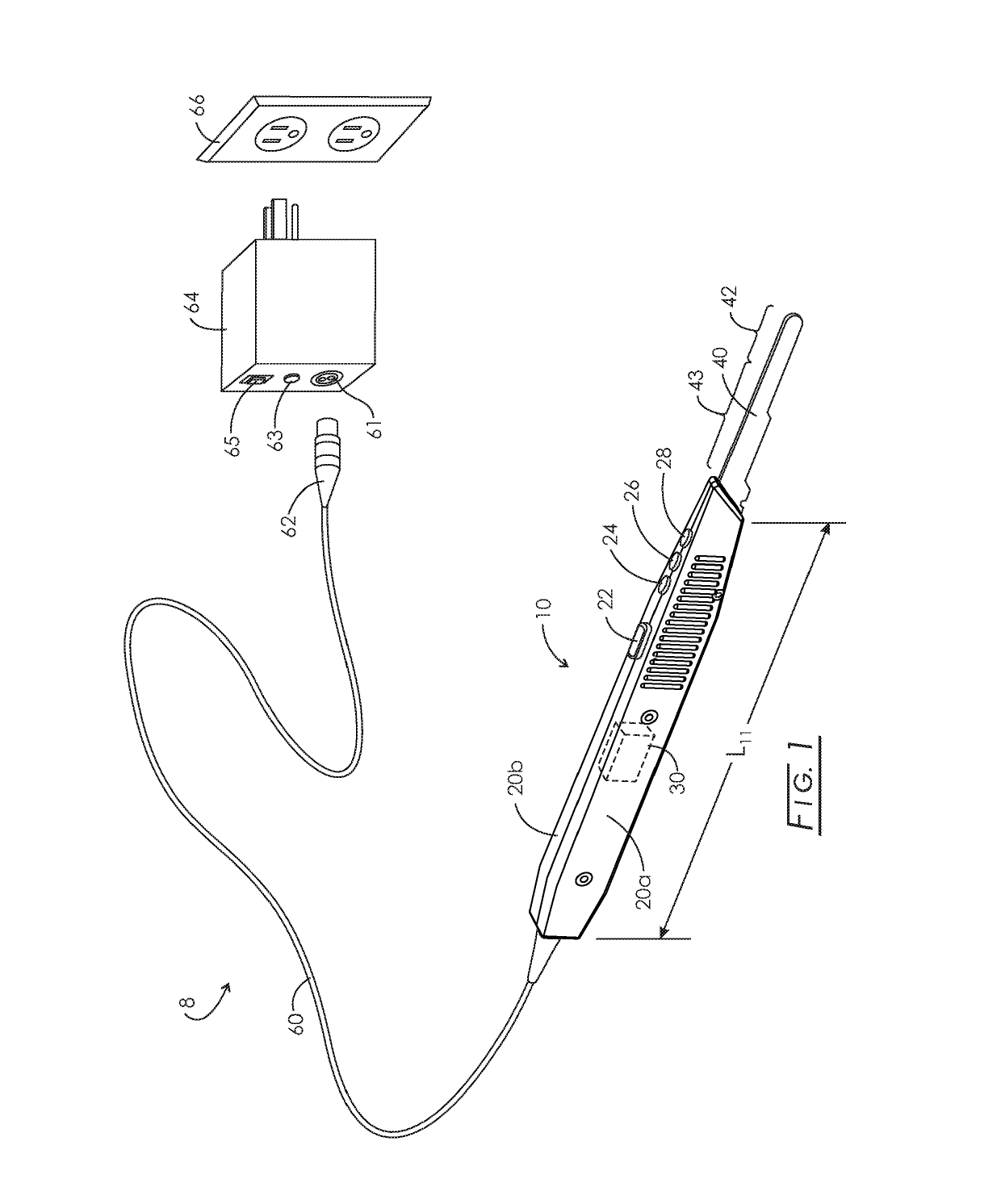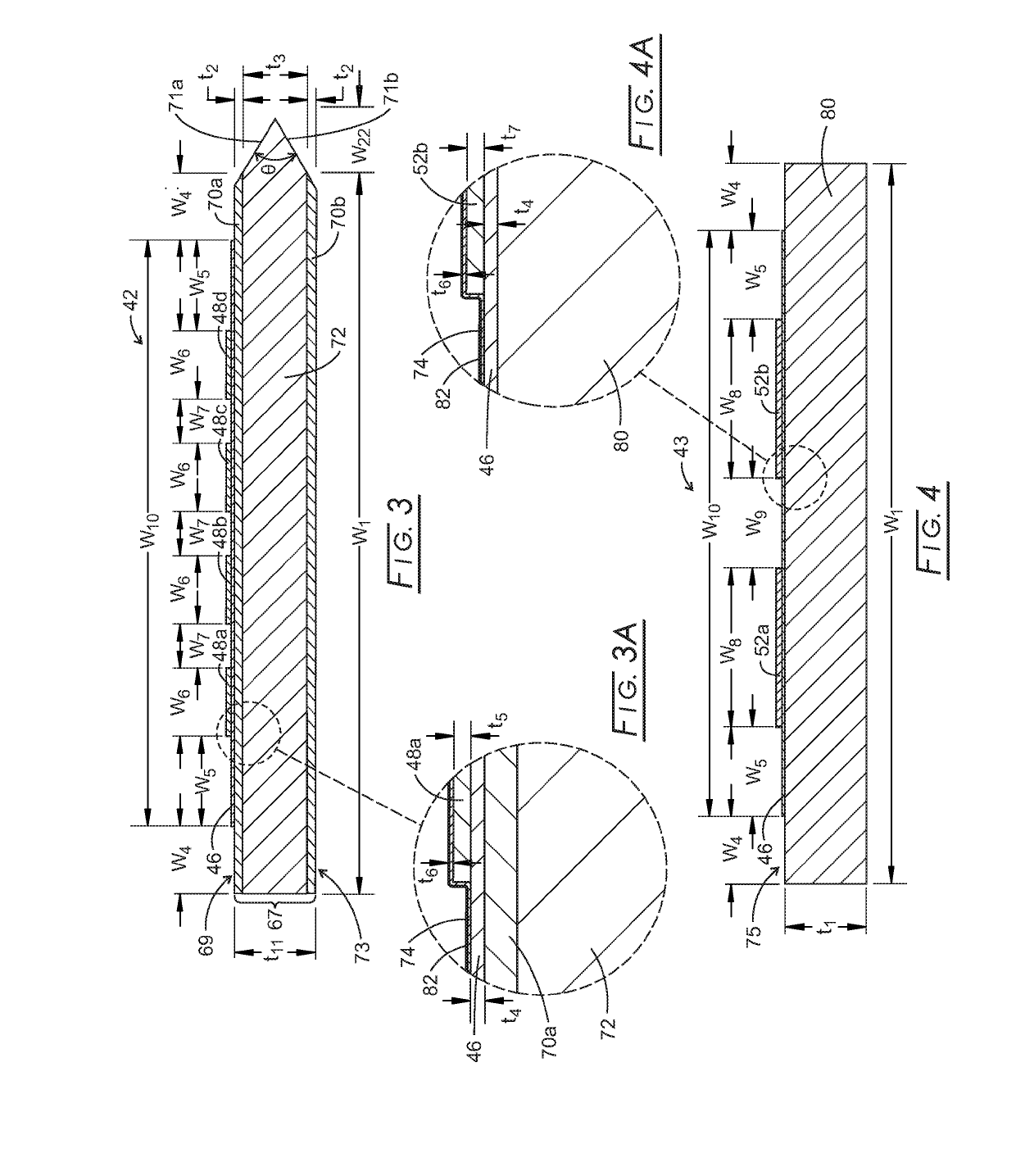Thermal Incision Apparatus, System and Method
a technology of incision apparatus and incision head, which is applied in the field of thermal incision apparatus, system and method, can solve the problems of reducing the efficiency of incision, reducing the precision of cutting, etc., and achieves the effects of reducing heat conduction, improving thermal delivery capability, and facilitating sustained operation
- Summary
- Abstract
- Description
- Claims
- Application Information
AI Technical Summary
Benefits of technology
Problems solved by technology
Method used
Image
Examples
example
[0154]Referring to FIGS. 1, 2 and 3 and by way of example of one preferred design, the dimensions L2, L3, L4, L5, L6, W1, W2, t1, t2 and t11 of blade 40 are 0.340, 0.430, 0.870, 0.530, 0.860, 0.180, 0.350, 0.024, 0.0015 and 0.027 inches, respectively. The core 72 of first substrate 67 in heated portion 42 is silver (minimum 99% silver) and first cladding 70a and second cladding 70b are both stainless steel 430. The support member portion 43 comprises stainless steel 430 throughout. Based on [a] a preselected temperature of 500 C for the electrically resistive heating element 48 for the purposes of incision of tissue and sealing of transected blood vessels during surgery and [b] an assumed duty cycle of 50% (i.e., the fraction of time during surgery procedure that the electrically resistive heating element 48 of blade 40 is at preselected temperature), the total amount of heat that is conducted from the heater portion 42 of blade to handpiece 10 through support member portion 43 is o...
PUM
 Login to View More
Login to View More Abstract
Description
Claims
Application Information
 Login to View More
Login to View More - R&D
- Intellectual Property
- Life Sciences
- Materials
- Tech Scout
- Unparalleled Data Quality
- Higher Quality Content
- 60% Fewer Hallucinations
Browse by: Latest US Patents, China's latest patents, Technical Efficacy Thesaurus, Application Domain, Technology Topic, Popular Technical Reports.
© 2025 PatSnap. All rights reserved.Legal|Privacy policy|Modern Slavery Act Transparency Statement|Sitemap|About US| Contact US: help@patsnap.com



